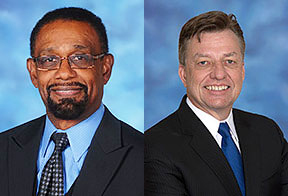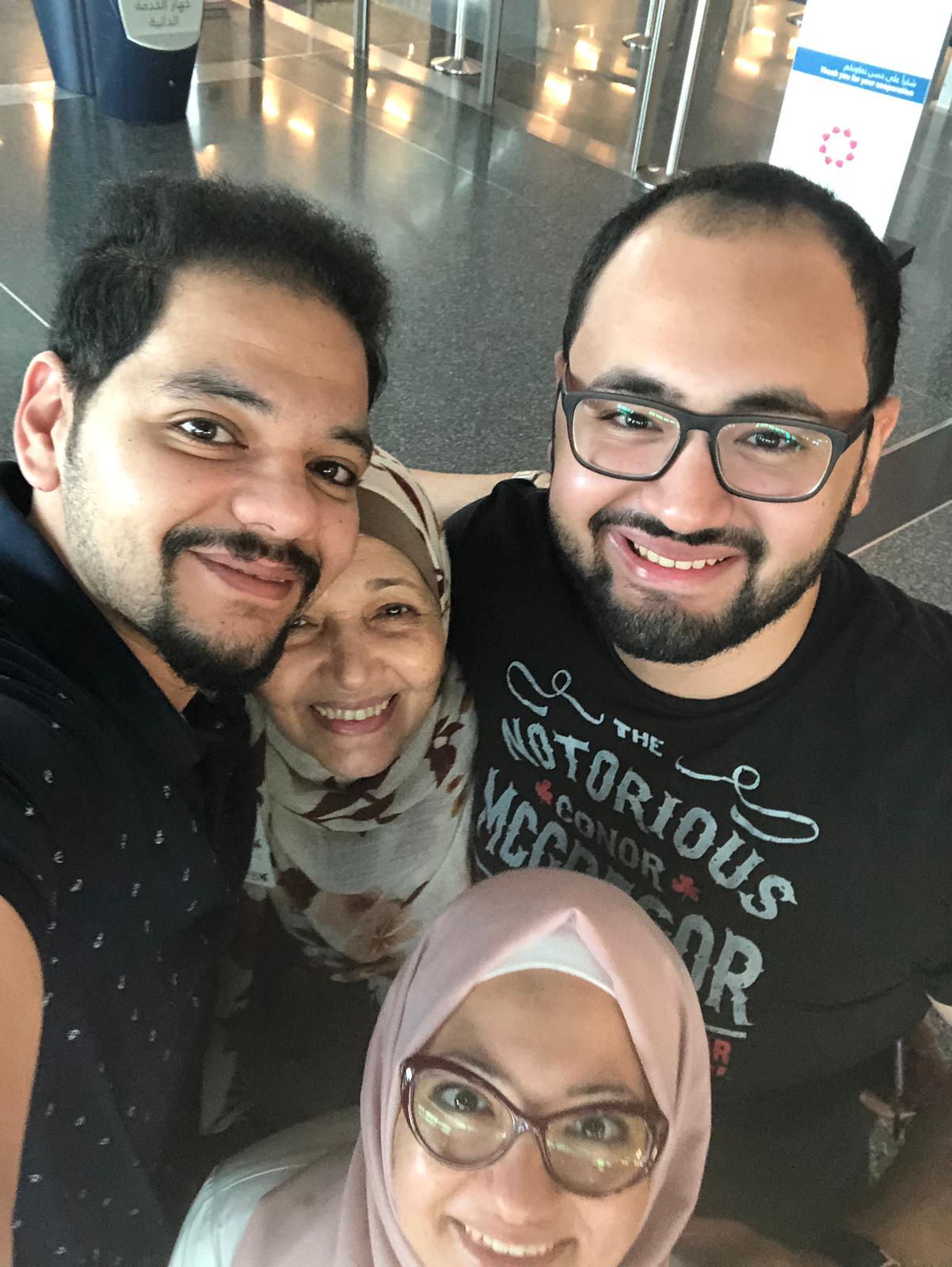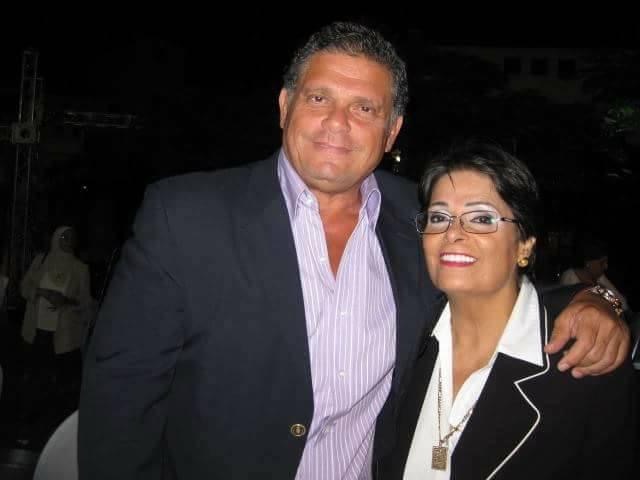Stories That Ignite Movements

I had the honor of interviewing two legends who I admire very much. Dr. Cleve Francis, the first Black cardiologist at the Inova Health System, a Country Music Singer signed by Capitol Records and featured in the African American Museum of history (!!), and an entire movement in and of himself and Dr. , the Coach K of cardiology, a man with an unmatched vision, a true ally, and a queen and kingmaker as many of his mentees call him. I wanted to know how hearing Dr. Fancis’s story of challenges and triumph impacted the way Dr. O’Connor leads Inova Heart and Vascular and the Journal of the American College of Cardiology: Heart Failure with a focus on diversity, equity, and inclusion.
There is so much power in sharing stories and listening to understand.
Francis, I read the editorial Dr. O’Oconnor wrote about you (will link JACC HF editorial) and I knew you were a legend, but when I met you over Zoom, your magic was palpable. How has your journey from Jennings, Louisiana to Country Music to being the first Black cardiologist in the Inova Health System changed how you live life?
Dr. Francis: My journey is an act of defiance in a system of racial suppression and stereotypical fulfillment. This was and still is an amazing journey through time. I feel like someone from the past living in the present and able to influence the future. I was a witness to some of the horrors and hopelessness of racism and segregation. Learned from the love and strength of my mother’s challenge to me to not to be overcome by sadness or anger but to envision a better future. The journey from Jennings to Northern Virginia and Inova was a mixture of hard work, faith, luck, hope, and help from complete strangers and mentors who helped guide me along the way. It was a journey of focus and taking advantage of every possibility using the talents I was born with.
I read about the gut-wrenching stories of your college roommate not realizing you were Black before your arrival to the college dorms and packing up his stuff when he realized you were Black and you being profiled and security called on you at your own hospital. How have moments like that fueled your advocacy efforts?
Dr. Francis: Those episodes taught me that this was someone else’s problem. I felt sorry for my medical school roommate that was embarrassed by his family. I did later speak to him and he said that they had threatened to take him out of the school if he remained my roommate. I had seen enough of this kind of thing to not be bothered for one second. I was the only medical student with a private room- a good thing. The incident at the hospital reminded me what it is like to be in a white culture. You will always be Black and would not be given the benefit of a doubt. It was never assumed that I just might be a physician. The lesson here is to not let one negative incident alter one’s focus.
How has the landscape of cardiology changed since you first became a cardiologist? Or has it really?
Dr. Francis: Today cardiology has changed and there are many more Black professionals. In my earlier journey, racism was very explicit. There were signs saying, “whites only”. Today there are no explicit warning signs, but structural racism, institutional racism, and implicit bias continue to devastate the Black community. Other minoritized people have simply used laws passed as the result of Black protest and struggle to advance themselves while Black communities have been stranded.
O’Connor, what was your initial impression when you first heard Dr. Francis’s story?
Dr O’Connor: I grew up in an area of the DC suburbs that was and is very culturally diverse. I was aware of racism on some level, but I hadn’t given much thought to how the experiences of others in high school, college, and medical training might be different than mine.
I was not at all prepared for what I learned from Dr. Francis. I was tremendously moved by hearing the challenges and barriers he had to overcome and inspired by his resilience and determination. I was certain that others were similarly unaware of the pervasiveness of racism and the bias in the medical and healthcare profession, and I was even more certain that I wanted to do all I could to turn this situation around.
O’Connor, how has hearing Dr. Francis’s remarkable journey, with its challenges, wins, lessons, and record-shattering changed how you lead your institution and journal with regards to diversity, equity, and inclusion?
Dr. O’Connor: My conversations with Dr. Francis helped me to view processes, systems, and individual encounters in the workforce, in running the journal, and in the care of patients through a different lens. I became increasingly aware of racism and bias, however unintentional, that exists in our healthcare system and the medical profession at large. It was clear that so much more could be done to promote inclusion and I was determined to develop and implement a plan of action.
An important first step was to schedule a virtual Town Hall so that healthcare workers could hear Dr. Francis’s story firsthand. His sincerity and optimism in the face of challenges and indignities was so inspiring to me and I felt certain it would have the same effect on others.
I quickly put an Anti-Racism/Diversity/Inclusion Task Force in place, with Dr. Francis and Dr. Wayne Batchelor as Co-Chairs, and charged them to address: (1) education, awareness, and training; (2) diversity in talent recruitment; (3) community relations, and (4) disparities in cardiovascular care.
Similarly, I have resolved to take concrete steps to encourage diversity and inclusiveness in the review process for manuscripts and in heart failure research in general. As researchers and an editorial team, we must be more attentive to differences in the implications of research findings for the various subsets of the broad range of patients we serve and demand inclusiveness in research. I’m counting on your continued guidance in this regard.
The murder of George Floyd on Memorial Day 5/25/2020, in the middle of a pandemic that disproportionally disseminated Black and brown communities ignited the medical community to look internally and develop initiatives to dismantle oppressive systems. Drs. Francis and O’Connor, what changes would you like to see in medicine and in cardiology specifically from a patient and clinician perspective?
Dr. Francis: In the face of the complexity of our discipline as cardiologists, we can build a tremendous level of trust between us and our patients. Our relationships extend over the years in many cases. We convince ordinary people with varying levels of “education” to undertake some of the most complex and dangerous procedures and treatments. In this pandemic, we should become one of the “Trusted Messengers “in advocating vaccination. We need to become more aware and involved in the social determinants of health for each of our patients and know that many factors outside of our medical offices and hospitals will ultimately determine the fate of our patients.
Dr. O’Connor: I would hope to see a greater outreach regarding risk factors and the importance of prevention. We need to take a more active role in screening for cardiovascular disease and assuring that appropriate and timely treatment is made available. More aggressive efforts to deliver care to underserved areas is critical, as is doing all we can to strengthen the bond between patient and physician. But even more importantly, we have to increase efforts to enroll representative cohorts in clinical trials to further the development of customized and individualized treatment strategies.
Francis, what advice do you have for my generation and the generation coming after mine? How do we get people in power to listen? How do we make lasting change?
Dr. Francis: From medical schools to advanced heart failure, we need to start treating people with diseases rather than treating diseases associated with people. When we continue to treat diseases, we assume no personal connection with the patient, and we have absolutely nothing in common with them. Things such as implicit bias would have little impact if we individualized each patient in our care. If we put it upon each of us to be personally aware of personal as well as structural and institutional matters. I disagree with forced bias training, but it should be available to all of those who seek it. It is good to advance the ideas of diversity and inclusion, but these are no substitute for equity. Institutions must ask themselves how many Black people do we have on-staff or in our administration? Unless this number reflects the general population, there is no equity and only inclusion and diversity. The correction of these disparities must be “intentional”.
O’Connor, what advice do you have for leaders in cardiology? Why should they be bold? Should they be concerned about backlash for speaking up against injustice? How can we change the face of who leads cardiology?
Dr. O’Connor: Most of us entered the medical profession to alleviate suffering and save lives. However unintentional, racism and bias in the system at large and its impact on patient care are not consistent with these goals. Bold action is needed to create a more equitable system and bring about change in research and day to day practice.
Francis, what is your biggest hope for 2021?
Dr. Francis: My greatest hope for 2021 is that we continue the efforts as Dr. Christopher O’Connor has done by appointing a task force of peers to work some of these issues out. At Inova for example, the Inova Heart and Vascular Institute Antiracism/Equality Taskforce that I co-chair with Dr. Wayne Batchelor has taken on issues of recruitment, healthcare disparities, community outreach, mentoring, training of cardiology fellows, and onboarding of new physicians. These efforts are already having an impact on our institution. These efforts are supported by the top administration in Inova.
O’Connor, what is your biggest hope for 2021?
Dr. O’Connor: COVID-19 has made the inequalities in our healthcare system even more apparent. While my biggest hope for 2021 is an end to the pandemic, I am equally hopeful that we will use the lessons from this pandemic to continue to work toward a healthcare system where disparities in care are a thing of the past.
This is how we change the things that are not right in our world, by listening to understand, by having empathy, by showing courage, by being resilient in our resolve but also working to dismantle systems that have oppressed Black people in America, by identifying true allies willing to use their privilege, power, and platforms to drive change, and by having hope. Thank you, a million times, over, Drs. Francis and O’Connor for sharing your stories and your advice, leaders like you give me hope for our future.
“The views, opinions and positions expressed within this blog are those of the author(s) alone and do not represent those of the American Heart Association. The accuracy, completeness and validity of any statements made within this article are not guaranteed. We accept no liability for any errors, omissions or representations. The copyright of this content belongs to the author and any liability with regards to infringement of intellectual property rights remains with them. The Early Career Voice blog is not intended to provide medical advice or treatment. Only your healthcare provider can provide that. The American Heart Association recommends that you consult your healthcare provider regarding your personal health matters. If you think you are having a heart attack, stroke or another emergency, please call 911 immediately.”



